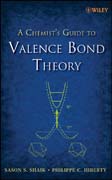
This is the first book to discuss modern valence bond theory in a pedagogicalcontext, written by leading authorities in the field. It comprehensively addresses the theoretical aspects and applications of the valence bond method to chemical calculations. This book is designed to teach chemists how to use VB theory to think concisely and rigorously and how to use VB computations. It is intended for chemists who are not necessarily experts on theory, but have some background in quantum chemistry. It will familiarize the reader with the various VB-based computational tools and methods available today and their use for a given chemical problem. INDICE: Preface.Chapter 1. A Brief Story of VB Theory, Its Rivalry With MOTheory, Its Demise And Resurgence.1.1. Roots of VB Theory.1.2. Origins of MO Theory and the Roots of VB-MO Rivalry.1.3. One Theory is Up the Other is Down.1.4. Mythical Failures of VB Theory: More Ground is Gained by MO Theory.1.5. Are the Failures of VB Theory Real?.1.5.1. The O2 "Failure".1.5.2. The C4H4 "Failure".1.5.3. The C5H5+ "Failure".1.5.4. The "Failure" Associated with the Photoelectron Spectroscopy (PES) of CH4 .1.6. VB is a Legitimate Theory Alongside MO Theory.1.7. Modern VB Theory: VB Theory is Coming of Age.Chapter 2. A Brief Tour Through Some VB Outputs and Terminology.2.1. VB Output for the H2 Molecule.2.2. VB Mixing Diagrams.2.3. VB Output for the HF Molecule.Chapter 3. Basic Valence Bond Theory.3.1. Writing andRepresenting VB Wave.Chapter 4. Mapping MO-CI TO VB Wave Functions.4.1. Generating a set of VB structures.
- ISBN: 978-0-470-03735-5
- Editorial: John Wiley & Sons
- Encuadernacion: Cartoné
- Páginas: 316
- Fecha Publicación: 01/01/2008
- Nº Volúmenes: 1
- Idioma: Inglés
